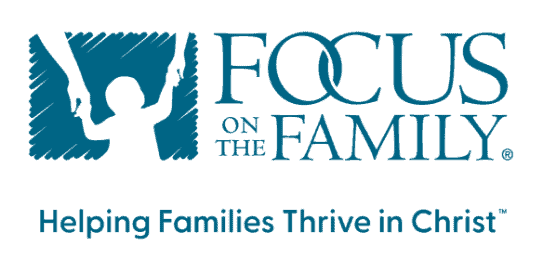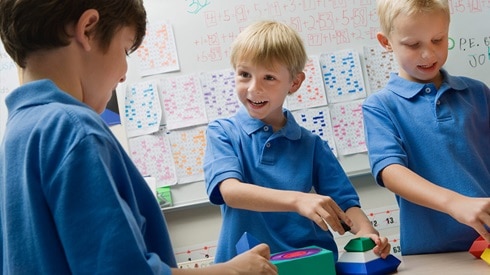“Mom, do you realize that more than 30 kids said hello to you as you walked through the halls in the last few minutes? They must like to see you here at school!”
Cole, B.J. Pennick’s eighth-grade son, was proud of the attention his mom received. B.J. was there to volunteer in the office and attend a PTA board meeting of Charles Haskell Middle School in Broken Arrow, Okla., where she and the other moms made important decisions—such as how to spend the $6,000 they raised for the school, whether to have uniforms next year, and what kind of dances and activities to plan for the students.
Haskell, with a student population of 900, isn’t a perfect school, but it is a good example of what can happen when parents’ involvement and prayers combine. More than 100 volunteers log hundreds of hours serving at the school, taking kids on field trips, tutoring in the classroom, doing vision and hearing screening, chaperoning at dances, serving on curriculum committees and countless other activities.
These parents intercede and put feet to their prayers, and they see positive results. There’s a growing camaraderie and spirit of cooperation between principals, teachers and parents as they ask, “How can we work together to improve academics, emphasize good character and build a better school?” Teachers express gratitude about the treats and thoughtful deeds that have blessed them. And parents are seeing more emphasis on academics and a higher standard of discipline in the classroom.
Powered by prayer
While school prayer is still debated in Congress, Christian students at Haskell as well as schools around the country meet to pray. The Fellowship of Christian Students has more than 70 sixth, seventh and eighth graders who meet after school to hear speakers, to pray, worship and grow in their faith.
As they gather together, the Christian kids in this middle school feel supported in their faith. “I’ve learned to share the gospel with different types of students,” says B.J.’s son Cole, 14, who’s a leader in student council. “I like the challenge of being distinctly Christian and have become stronger in the Lord this year.
“Because I’m a Fellowship student and my mom’s praying,” he adds, “teachers hold me to a higher standard.”
At schools such as Haskell, with a high level of parental involvement and a blanket of prayer over the faculty and students, an environment is created where learning is the goal, excellence is the focus, kids feel safe and teachers feel respected. They still face problems, such as the sex education program, which isn’t entirely abstinence-based, or the students experimenting with homosexuality. But as more and more Christian parents get involved and pray, rebuilding is taking place in the public schools.
This rebuilding process is reminiscent of the Old Testament prophet Nehemiah. Just as you may have been disturbed and saddened at the headlines about drug problems or violence in youth, problems in schools in your own community or the moral decline in our society, Nehemiah too was grieved at the devastation of his people.
When he found out that the wall of Jerusalem was torn down, the gates burned and his people in great distress, he fasted and prayed for days, calling upon God for help. He not only prayed — he took action. With the king’s permission, he went back to Jerusalem to lead the rebuilding of the wall. There he didn’t just gather volunteers or work, he prayed every step of the way and encouraged others to turn their hearts to God as their only hope. In Nehemiah’s case, the prayer and action resulted in the wall being rebuilt and the city restored against terrible odds and formidable enemies.
Wall building
As Christian parents and teachers have rallied, worked and prayed, we are seeing signs of hope in public schools as a similar rebuilding is beginning to happen. One of the positive trends is the effort to turn from the values-free philosophy to teaching virtue and moral values in schools. For example, in Raleigh, N.C., Judy Hoffman, a parent and school board chairman, saw the need to put character back into public education.
After months of praying and careful planning with a 32-member task force about how to implement character education, Judy and the people in her community came up with a plan through which character is integrated into every area of the school day at all levels for the district’s 90,000 students. The results in their schools are impressive: The academic climate has improved, tests scores are up, pregnancy and dropout rates have decreased, as has violence in the schools. Character education programs like this are being developed at the local level in almost every state, and they offer great opportunities for Christians to get involved.
In addition, “released-time” programs, in which public school students can legally receive 30 minutes of religious instruction once a week, are growing all over the country. Taught mainly by parent volunteers, these programs are giving millions of kids an opportunity to become acquainted with God’s Word. In East Cottonwood Elementary School in northern California, for example, more than half of the 670 students in first to fourth grades go to the nearby St. Anne’s Catholic Church on Friday afternoons for a lively half-hour of singing, prayer and Bible stories.
Schools still face formidable foes: postmodern secular teaching and liberal agendas, policies that need to change, overly large classes, problems with discipline and the need for higher academic standards. But if, like Nehemiah, we mix prayer with works, if parents are actively and prayerfully involved in their children’s education, the evidence shows that public schools can change.
















